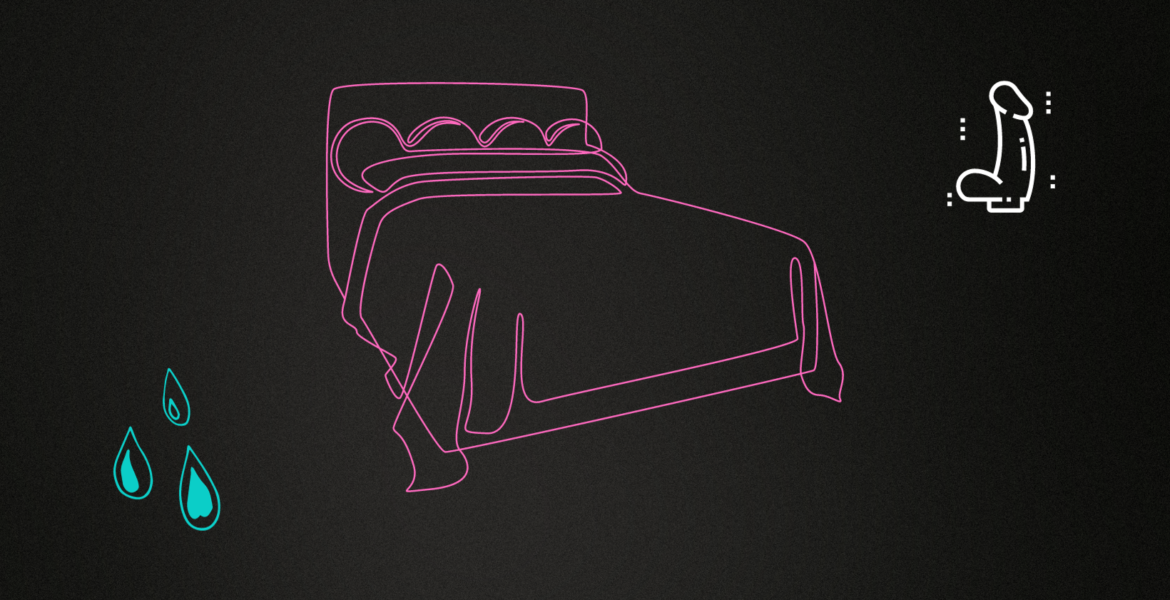Wet Dreams 101: Myths, Mistakes, Product Choices & Hygiene
September 30, 2023 2023-09-30 14:51Wet Dreams 101: Myths, Mistakes, Product Choices & Hygiene

Wet Dreams 101: Myths, Mistakes, Product Choices & Hygiene
As parents, we often find ourselves navigating the uncharted waters of sexuality education, and one topic that frequently comes up is wet dreams.
It’s a natural and entirely normal part of growing up, yet it can be a source of confusion and even embarrassment for both parents and boys.
In this comprehensive blog post, we’re going to dive into everything you need to know about wet dreams – from debunking myths and addressing common mistakes to discussing products that can be useful and emphasizing the importance of hygiene.
So, let’s get comfortable and have an open conversation about wet dreams!
Let’s first look into – What Are Wet Dreams?
Wet dreams, scientifically known as “nocturnal emissions,” occur when an individual ejaculates during sleep, typically in a dream.
This phenomenon is more common in males, but it can also occur in females. It’s important to emphasize that wet dreams are a natural part of sexual development and not something to be ashamed of or worried about.
A. Busting Myths About Wet Dreams:
1. Wet Dreams Are a Sign of Sexual Misconduct
Truth: This is a common misconception. Wet dreams are not related to engaging in sexual activities or having impure thoughts. They are a result of the body’s natural processes.
2. Wet Dreams Only Happen in Adolescence
Truth: While wet dreams are more frequent during puberty, they can occur at any age. Hormonal changes, stress, and other factors can influence their frequency.
3. Wet Dreams Are a Sign of Sexual Dysfunction
Truth: Wet dreams are a natural and healthy occurrence, not an indication of sexual dysfunction. They are the body’s way of regulating sexual tension and maintaining reproductive health.
4. Only Boys Experience Wet Dreams
Truth: While wet dreams are more common in boys, they can also happen to girls. Girls may experience vaginal lubrication or moisture during sleep, which is the equivalent of a wet dream.
5. Masturbation Prevents Wet Dreams
Truth: Some people believe that regular masturbation can prevent wet dreams. While masturbation is a normal and healthy activity, it doesn’t necessarily eliminate the occurrence of wet dreams. They can still happen from time to time.
B. Common Mistakes Young Boys Make:
1. Ignoring Hygiene:
Good personal hygiene is essential. After experiencing a wet dream, it’s important to clean the genital area and change your underwear. Failing to do so can lead to discomfort and potential odor.
2. Feeling Ashamed:
Many individuals, especially adolescents, feel shame or embarrassment about wet dreams. It’s crucial to reassure children that this is a normal part of growing up and not something they should be ashamed of.
3. Overreacting or Underreacting:
When a child or adolescent experiences a wet dream, parents may tend to either overreact by showing shock or anger, or underreact by dismissing it as unimportant. It’s important to strike a balance by acknowledging the event calmly and discussing it openly to address any concerns or questions.
4. Lack of Communication:
Many families avoid discussing topics like wet dreams due to discomfort or cultural taboos. However, open communication is crucial. When parents don’t provide information or answer questions, children may turn to unreliable sources like peers or the internet for information.
5. Not Normalizing It:
Failing to normalize wet dreams can make children feel abnormal or embarrassed. It’s essential to reassure them that wet dreams are a normal part of growing up and that they happen to many people during adolescence.
C. Products To Use:
1. Absorbent Underwear:
Some individuals find it helpful to wear absorbent underwear, like those designed for periods, to manage any leakage and keep bedding clean. These are readily available and can provide comfort and peace of mind.
2. Waterproof Mattress Protectors:
To protect mattresses and bedding, consider using waterproof mattress protectors. These are easy to clean and can prevent stains and odors.
3. Extra Bedding:
Keep extra sheets and blankets on hand for quick changes during the night, if needed.
D. Hygiene Tips:
1. Cleanliness:
After a wet dream, it’s essential to clean the genital area thoroughly with warm water and mild soap. Dry the area gently to prevent irritation.
2. Changing Bedding:
Change your bed linens promptly if they become soiled. This helps maintain a clean and comfortable sleeping environment.
3. Discuss Hygiene With Your Children:
Openly discuss the importance of hygiene with your children. Encourage them to ask questions and address any concerns they may have.
Conclusion:
Wet dreams are a normal and natural part of growing up, and as parents, it’s our responsibility to provide our children with accurate information, understanding, and support. By debunking myths, addressing common mistakes, discussing helpful products, and emphasizing hygiene, we can create an environment where our children feel comfortable and confident as they navigate the sometimes tricky waters of sexual development.
Remember, open communication is key, and enrolling in our ‘Wet Dreams’ online course can provide you with valuable insights and tools for these important conversations.
Let’s ensure our children grow up informed, supported, and unashamed about their bodies and the changes they experience.




